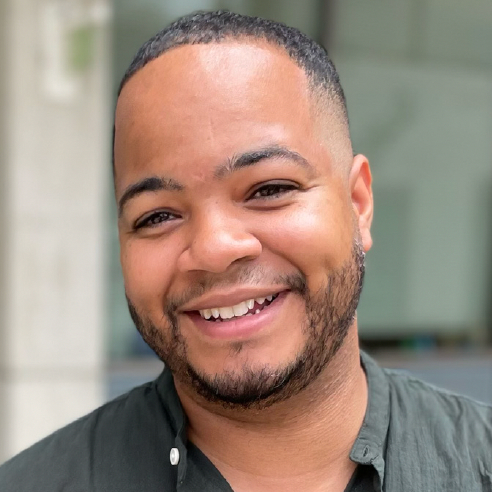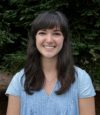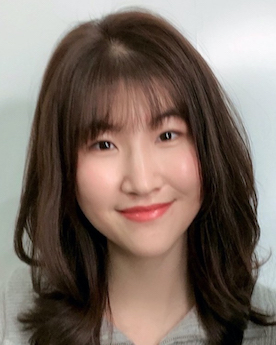

Massachusetts General Hospital
Appointed in 2005

University of Colorado, Boulder
Appointed in 2022
Read more
University of Colorado, Boulder
Appointed in 2022
Histone methyltransferase PRC2 (Polycomb Repressive Complex 2) silences genes via successively attaching three methyl groups to lysine 27 of histone H3 (H3K27me3). Several research groups including ours demonstrated that PRC2 associates with numerous pre-mRNA and lncRNA transcripts with a strong binding preference for G-quadruplex forming RNA. However, the structural details of their interactions have so far been unclear. My research provides a 3.3Å-resolution cryo-EM structure of a PRC2-RNA ribonucleoprotein complex. Notably, G-quadruplex RNA bridges the dimerization of PRC2 with a symmetric interface comprised of two copies of the PRC2 catalytic subunit EZH2. Especially, EZH2 SET domain is indicated to directly facilitate the RNA-mediated dimerization of PRC2. Interestingly, those residues were previously characterized in the PRC2-nucleosome cryo-EM structure to physically interact with the histone H3 tail and nucleosome DNA. Therefore, I hypothesize that in the dimerized PRC2-RNA complex, RNA inhibits PRC2 activity by limiting H3 tail accessibility to the active site. Overall, my study provides a new perspective of RNA regulation of chromatin modifiers.


University of Pennsylvania
Appointed in 1950


University of Chicago
Appointed in 1993

University of California, San Francisco
Appointed in 1989
Read more
University of California, San Francisco
Appointed in 1989

Rockefeller University
Appointed in 2016
Read more
Rockefeller University
Appointed in 2016
Female mosquitos seek out hosts for blood meals, a behavior that is required for reproduction and that evolved several times in insect evolution. Host seeking is a persistent behavioral state composed of sequential behaviors such as taking flight, searching, landing, and feeding. It is not known how these behaviors are coordinated nor how this persistent motivational state is signaled in the brain._x000D_
_x000D_
I propose to study sequential host-seeking behaviors by applying an automated behavior classification system to track multiple mosquitoes in three dimensions as they seek out and feed on a human host. Because of the important role of dopamine in insect decision making, I will use genetic approaches to manipulate dopamine signaling circuits in the mosquito Aedes aegypti. I will assess the effect of these perturbations during host seeking and during an assay simulating host defensive behavior. These experiments will give a description of the role of dopamine signaling in a sustained complex behavior that evolved in the common ancestor of mosquitoes._x000D_
_x000D_


University of Buffalo
Appointed in 1959

University of Colorado, Boulder
Appointed in 1973
Read more
University of Colorado, Boulder
Appointed in 1973


University of Michigan
Appointed in 1970


Carlsbadt Laboratorium
Appointed in 1957

University of California, Santa Cruz
Appointed in 2005
Read more
University of California, Santa Cruz
Appointed in 2005

Stanford University School of Medicine
Appointed in 2002
Read more
Stanford University School of Medicine
Appointed in 2002

National Research Consiglio, Italy /
Harvard University Medical School
Appointed in 1976
Read more
National Research Consiglio, Italy / Harvard University Medical School
Appointed in 1976


University of Utah
Appointed in 1989


Yale University
Appointed in 1953

Whitehead Institute for Biomedical Research
Appointed in 2010
Read more
Whitehead Institute for Biomedical Research
Appointed in 2010
Many animal species are able to regenerate missing body parts or even entire body plans. I am using molecular and genomic tools to study regeneration and learn whether regeneration mechanisms in various species were inherited from their common ancestor or if they have evolved independently. Discovering conserved mechanisms might reveal previously unknown but potentially critical aspects of regeneration in animals.
During college, I studied development, regeneration, and asexual reproduction in segmented worms. My graduate work focused on the genomes of early animal lineages such as sea anemones and sponges to learn about early animal evolution. Such comparative genomic analyses have allowed us to infer changes in gene content, gene structure, and genomic organization that accompanied the appearance of animals and their subsequent radiation into phyletic lineages. However, we don’t yet understand the functions of the genomic innovations unique to animals.  I am now studying the evolution of a particular biological process, focusing on how the functions of a few genes have evolved. For this research, I have returned to my interest in regeneration which, with the help of modern genetic tools, can be studied at molecular and cell biological levels in many species.

Harvard University Medical School
Appointed in 2016
Read more
Harvard University Medical School
Appointed in 2016
The vagus nerve is a key part of the neuroendocrine axis that controls feeding behavior and metabolism. Within the gastrointestinal tract, vagal sensory neurons detect ingested nutrients and mechanical stretch of the stomach, although underlying sensory transduction mechanisms are not understood. Basic questions remain about how ingested food is sensed, and how inputs are relayed centrally to coordinate systemic responses. Unraveling the functions of different vagal sensory neuron types in feeding behavior and metabolism control would provide a basic understanding of gut-to-brain communication mechanisms, and perhaps provide new therapeutic targets to control appetite and help treat metabolic disorders like diabetes, obesity and anorexia._x000D_
_x000D_
I am working towards characterizing a subpopulation of vagal sensory neurons that express cholecystokinin receptor type- A (CCKAR), a receptor for the gut satiety hormone cholecystokinin (CCK). Using transgenic mice, anatomical tract tracing, calcium imaging and optogenetics I want to understand the structure and function of the neural circuits formed by these sensory neurons. These studies will enable long-term efforts to shed light on the sensory biology of the vagus nerve- from understanding signal transduction mechanisms in the periphery to determining the organization of central inputs that orchestrate behavioral and endocrine responses._x000D_
_x000D_


Dana-Farber Cancer Institute
Appointed in 2002

Memorial Sloan-Kettering Cancer Center
Appointed in 1992
Read more
Memorial Sloan-Kettering Cancer Center
Appointed in 1992

University of California, San Francisco
Appointed in 1999
Read more
University of California, San Francisco
Appointed in 1999

Whitehead Institute for Biomedical Research
Appointed in 1984
Read more
Whitehead Institute for Biomedical Research
Appointed in 1984

Johns Hopkins University /
University of California, San Francisco
Appointed in 1971
Read more
Johns Hopkins University / University of California, San Francisco
Appointed in 1971

National Institute of Dental Research and National Cancer Institute
Appointed in 1982
Read more
National Institute of Dental Research and National Cancer Institute
Appointed in 1982

University of California, Berkeley
Appointed in 2011
Read more
University of California, Berkeley
Appointed in 2011

University of Wisconsin, Madison
Appointed in 1993
Read more
University of Wisconsin, Madison
Appointed in 1993

MRC Center, University Medical School, England
Appointed in 1967
Read more
MRC Center, University Medical School, England
Appointed in 1967

MRC Center, University Medical School, England
Appointed in 1969
Read more
MRC Center, University Medical School, England
Appointed in 1969

University of California, San Francisco
Appointed in 1984
Read more
University of California, San Francisco
Appointed in 1984

The Scripps Research Institute
Appointed in 2024
Read more
The Scripps Research Institute
Appointed in 2024
Tauopathies are diseases such as Alzheimer’s that are characterized by the aggregation of tau protein. Unfortunately, no disease-modifying therapies currently exist for tauopathies, and the impact of these diseases will increase as the global population trends towards an aging demographic.
Dr. Alex Stevens will investigate a novel mode for treating tauopathies in Dr. Keren Lasker’s lab at the Scripps Research Institute. Autophagy-based degradation methods are making progress, yet a hallmark of tauopathies is that these solid tau aggregates resist degradation. To circumvent this issue, Dr. Stevens will engineer biomolecular condensates to clear tau aggregates. Stevens’ research will set the foundation for next generation tauopathy therapies and provide a general framework using biomolecular condensates to modulate pathological events.
Stevens investigated how viruses hijack cellular transport mechanisms during his Ph.D. research in Dr. Samara Reck-Peterson’s lab at the University of California, San Diego. By exploring the conflicts between viruses and the host intracellular transport machinery, Stevens discovered a previously unknown transport mechanism that potentiates the innate immune response. His research provides insight into how cells mount a defense against infecting viruses and highlights the important role of cellular transport in this process. Now, Stevens will attempt to rationally hijack autophagy to enable degradation of aggregated tau.


Stanford University
Appointed in 2013
The human brain is a highly ordered structure, consisting of billions of neurons linked through trillions of intercellular connections. Among the most powerful computational machines known to man, the human brain controls everything from our ability to perceive the world around us to higher order functions involved in learning and memory. At the heart of the brain’s processing power lies the synapse.
Synapses are specialized subcellular structures that mediate communication between neurons, thereby dictating information flow within the nervous system. Numerous proteins involved in synapse formation have been identified, yet how active zone and synaptic vesicle proteins coalesce into highly ordered macromolecular complexes remains a fundamental question in neurobiology. I am interested in elucidating the molecular underpinnings that support synapse formation and maintenance.
To this end I will use the Hermaphrodite Specific Neuron in C. elegans to examine how synapses are formed during development and maintained throughout the lifespan of the organism. Through a combinatorial approach employing RNAi and forward genetic screens as well as fluorescent microscopy I will take advantage of the inherent benefits of the C. elegans system to study conserved processes of synapse formation in the context of an intact organism.

MRC Center, University Medical School, England
Appointed in 1984
Read more
MRC Center, University Medical School, England
Appointed in 1984

University of Colorado, Boulder
Appointed in 1981
Read more
University of Colorado, Boulder
Appointed in 1981

University of Cambridge, England
Appointed in 1959
Read more
University of Cambridge, England
Appointed in 1959

University of California, Berkeley
Appointed in 2022
Read more
University of California, Berkeley
Appointed in 2022
The discovery of novel antitumor drugs requires the development of new methods to synthesize molecules of increasing diversity and complexity to meet the challenges of drug efficacy and safety. Biocatalysis provides an attractive strategy to perform chemical reactions under mild and sustainable conditions. The Chang Lab has recently discovered a family of radical halogenases that perform the regio- and stereoselective chlorination of unactivated, aliphatic C–H bonds within several amino acid substrates. Despite the synthetic utility of organohalides, there are limited biosynthetic and chemical methods for the selective chlorination of unfunctionalized alkanes beyond this example.
Using mechanistically-guided protein engineering, my research aims to expand the substrate and reaction scope of these enzymes to produce noncanonical amino acids bearing versatile functional group handles, including halogens or azide. These synthetic residues will then be incorporate into biological molecules of interest, such as known anticancer peptides, and can be further functionalized to access diverse, cyclic structures. Overall, this strategy provides a fully biosynthetic method for producing novel analogs of anticancer peptides with the goal of discovering improved drugs.

University of Glasgow, Scotland
Appointed in 1956
Read more
University of Glasgow, Scotland
Appointed in 1956


Cornell University
Appointed in 1987

University of California, Berkeley
Appointed in 2011
Read more
University of California, Berkeley
Appointed in 2011


Rockefeller University
Appointed in 1974

Harvard University Medical School
Appointed in 2006
Read more
Harvard University Medical School
Appointed in 2006

University of California, San Francisco
Appointed in 2003
Read more
University of California, San Francisco
Appointed in 2003

MRC Center, University Medical School, England
Appointed in 1979
Read more
MRC Center, University Medical School, England
Appointed in 1979


University of Michigan
Appointed in 2013
Mutations in Fig4 cause the incurable neurodegenerative diseases amyotrophic lateral sclerosis (ALS) and CharcotMarie-Tooth Syndrome (CMT) through dysregulation of phosphatidylinositol (3,5)-bisphosphate (PI3,5P2). A molecular understanding of the mechanisms by which Fig4 regulates both the transient production and rapid turnover of this signaling lipid will be essential for devising therapies. Fig4 is the lipid phosphatase responsible for dephosphorylating PI3,5P2 at the 5 position to produce phosphatidylinositol 3-phosphate (PI3P). Paradoxically, conserved residues in the yeast Fig4 phosphatase active site are required to activate the lipid kinase catalyzing the addition of the very phosphate it hydrolyses. This suggests an internal mechanism for preventing uncontrolled elevation of PI3,5P2 in the absence of the activity required to restore it to basal levels. The research proposed here will use a yeast model to elucidate the conserved mechanisms by which Fig4 controls both the synthesis and turnover of PI3,5P2 and uncover which of these mechanisms are disrupted by disease related mutations.

Massachusetts Institute of Technology
Appointed in 2017
Read more
Massachusetts Institute of Technology
Appointed in 2017
My postdoctoral research focuses on how specific aneuploidies benefit tumorigenesis and cancer progression. Over 90% of human solid tumors exhibit aneuploidy, which is characterized by whole chromosome gains and losses. Paradoxically, in normal and untransformed cells aneuploidy impairs cell proliferation, causes many cellular stresses, and is an infrequent occurrence in healthy somatic tissues. I propose to test the hypothesis that aneuploidy promotes tumorigenesis by suppressing oncogenic fitness penalties caused by oncogenic stress. _x000D_
_x000D_
Since joining the Amon lab in Sept 2016, I have been using Ewing sarcoma (ES) as my research model. Most ES tumors harbor a clear cancer driver mutation, the EWS-FLI1 fusion gene, due to a reciprocal chromosomal translocation between Chromosome 11 and 22. In ES, Chromosome 8 and 12 gains are extremely common and this cancer displays one of the lowest mutational landscapes amongst all cancers. This distinct driver and recurrent aneuploidy makes ES a good model for studying the significance of specific aneuploidies in tumorigenesis. I utilize a tissue culture system and ES patient data (in collaboration with the Stegmaier lab at DFCI) as my research models in this project. With this work in ES, I hope to provide a basis for studies in other cancers that are similarly characterized by specific aneuploidies, such as glioblastomas and B-cell lymphomas.


Stanford University
Appointed in 1979

Harvard University School of Public Health
Appointed in 1997
Read more
Harvard University School of Public Health
Appointed in 1997


Cold Spring Harbor Laboratory
Appointed in 1992


Stanford University
Appointed in 2022
The ability to learn and memorize is essential for all living organisms to adapt to the ever-changing environment, and it serves as the foundation for higher-order cognitive processes such as reasoning, planning, and decision-making. However, the neuronal basis of memory remains unclear — it is largely unknown how memory-related information is represented by populations of neurons in the brain, and how that representation is formed as a result of learning-induced plasticity. By studying the activity of neurons underlying long-term memory using in vivo imaging and opto/chemogenetics, I hope to understand the neural mechanisms by which new information is learned and processed in neuronal populations. This work will provide insights into the computational principles that govern learning in biological and artificial neural networks.

University of California, San Francisco
Appointed in 2023
Read more
University of California, San Francisco
Appointed in 2023
When planning or troubleshooting, we often contemplate possible actions and imagine their outcomes based on prior knowledge. The hippocampus has been implicated in our ability to imagine possible futures, yet it is unclear how future representations are regulated and what functions they subserve. Dr. Xulu Sun will explore the anatomical underpinnings, mechanistic control, and functional significance of hippocampal future representations in Dr. Loren Frank’s lab at the University of California, San Francisco. Dr. Sun will use behavioral tasks and multiregional electrophysiology to explore how the hippocampus interacts with other brain regions to enable future representations and how these representations may support flexible planning. This process is impaired in many neuropsychiatric disorders such as schizophrenia. Thus, Dr. Sun’s research of the underlying neuroscience may reveal new strategies for treating such disorders.
As a PhD student in Dr. Krishna Shenoy‘s lab at Stanford University, Sun investigated dexterous movement control. There she used behavioral tasks and large-scale neural recordings to show how the cortical motor system implements a behavior-organizing map in rhesus monkeys. Dr. Sun will now use her strong foundation in neural computations to explore the neural basis of future representations.

Cold Spring Harbor Laboratory /
MRC Center, University Medical School, England
Appointed in 1982
Read more
Cold Spring Harbor Laboratory / MRC Center, University Medical School, England
Appointed in 1982

Karolinska Institutet, Stockholm
Appointed in 1968
Read more
Karolinska Institutet, Stockholm
Appointed in 1968


Harvard University Medical School
Appointed in 1999